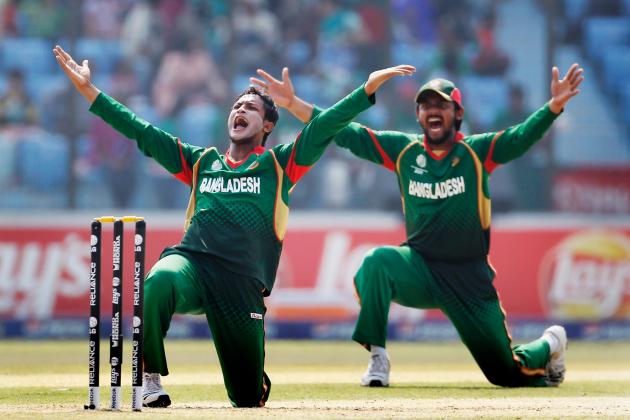 Big opponent. Bat first. Trail by approximately 300 after the first innings.
Big opponent. Bat first. Trail by approximately 300 after the first innings.
For Bangladesh, that’s what unfolded in the opening Test of the recently concluded series against Pakistan in Khulna. The hosts, unable to capitalise on a number of starts, fell short of what was necessary on a typically barren surface. And then Mohammad Hafeez and Co. hammered them, made them pay.
From there, only one result seemed possible—Pakistan would surely romp to the finish line. For I’d seen this pattern before, way back in 2003 when Bangladesh travelled to the top-end of Australia for a peculiar winter series.
It was the first time I’d ever seen the Bangladeshis live in action. They were into their fourth year of five-day cricket, and they’d lost 13 of their first 19 Tests by an innings. Next up was arguably the greatest Australian side of all time.
The first Test was at the Marrara Cricket Ground in Darwin. Bangladesh, facing a big opponent—the biggest of them all—batted first. Quickly, they were blown away for 97. After the first innings, they trailed by approximately 300.
The subsequent hiding was followed by a trip to the Bundaberg Rum Stadium (the most Australian name for anything, ever) in Cairns. Again, Bangladesh batted first, faring better the second time around to post 295. Australia replied with almost 600. Again, Bangladesh trailed by approximately 300.
Of course, Test cricket’s relative newcomers have come a long way since—of their last 19 Tests, only two have ended in defeats by an innings. Four of them have even been wins. But trailing once more by 300 in Khulna, my expectation was still that Bangladesh would fold.
But then they didn’t.
Tamim Iqbal racked up 206. Imrul Kayes cruised to 150. Between them, the pair put on the highest second-innings opening partnership in Test history. Bangladesh stormed to 555 for six and an emphatic draw, if there could ever be such a thing.
Captain Mushfiqur Rahim labelled it as “nothing less than a win.” Coach Chandika Hathurusingha said it was “a very big turning point in Bangladesh cricket.” Days later, the same side was pummelled by 328 runs by a resurgent Pakistan in the second Test.
Had those words been hasty? Premature? Initially it felt so. But the more time you gave to it, the more those thoughts changed.
In similar conditions, this Pakistan outfit had walloped the Ashes-winning, world-conquering Australians just last year. They’d tamed Mitchell Johnson. They’d quelled Steven Smith. They’d blunted David Warner. They’d frustrated Michael Clarke.
In the mood, like they were in Dhaka, this Pakistani side are a seriously good cricket team. For Bangladesh, there was no shame in losing the second Test. In fact, that they’d pushed Misbah-ul-Haq’s men into a corner for the whole tour prior had actually been remarkable.
So effective had they been against the visitors that former Pakistan captain Ramiz Raja angrily snapped that his country had reached the “lowest point in our international history.”
Progress. Unquestionably.
And what’s more, Test cricket’s infants look to have the tools to continue the upward trend that began in late 2014 and continued—even if it was a different format—through the World Cup.
At the top of the order, Iqbal and Kayes, at 26 and 28, look to have established a partnership that’s sustainable. After them, the exciting Mominul Haque is averaging a cool 60 at Test level. Then comes the nation’s trump card in Shakib Al Hasan, and after him a revitalised captain in Mushfiqur, who’s enjoyed a strong six months.
For perhaps the first time in Bangladesh’s history, the nation has a batting lineup that looks capable of genuinely scoring—just as it showed against Zimbabwe last year and now against Pakistan.
Of course, the bowling lacks the same potency. Too much is thrust upon Shakib and Taijul Islam, spinners who lack the support of high-quality seam bowling. But decades ahead of them, India are still struggling with the same problem and have learned to cope. Bangladesh will too. And if 2015 is anything to go by, they could do so quickly.
The signs are there that this is a nation steadily rising.
It’s good for the game if it continues.
Source:BR






More Stories
Massive peoples protest against poor economy and shortages in Sri Lanka
Xi Jinping says China will uphold world peace and international law
Brown, Desi, South Asian: Diaspora reflects on the terms that represent, erase them